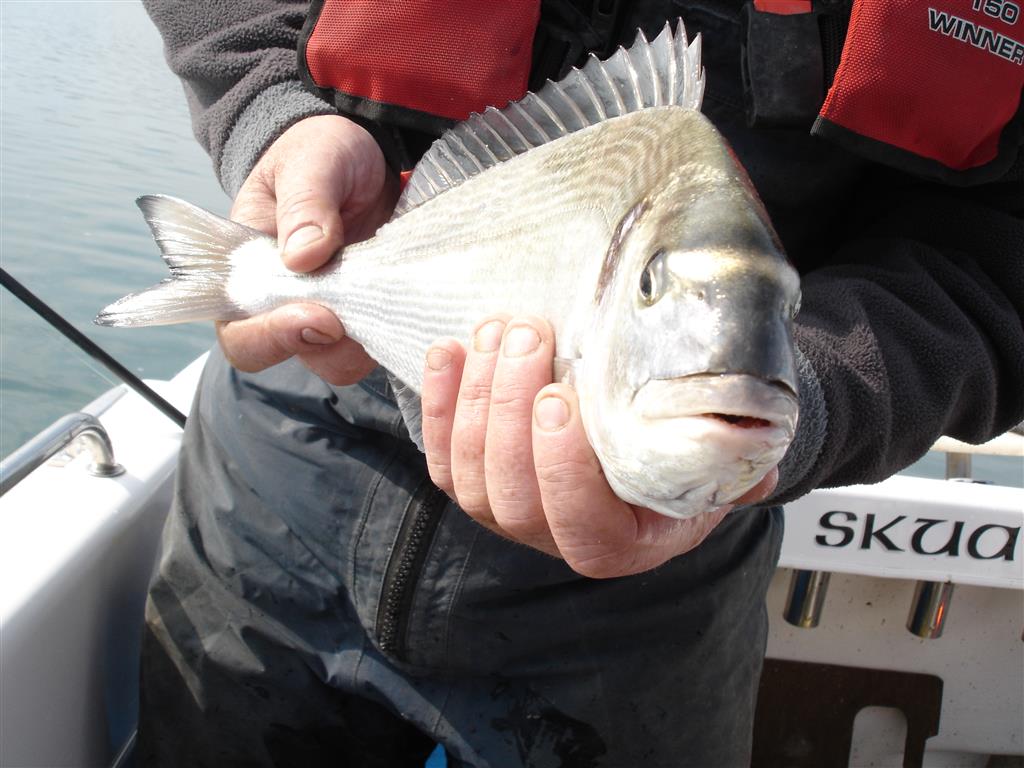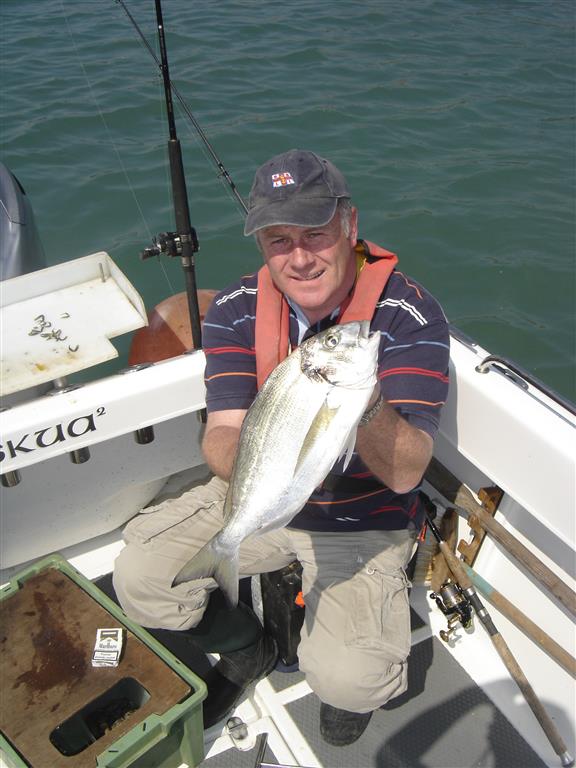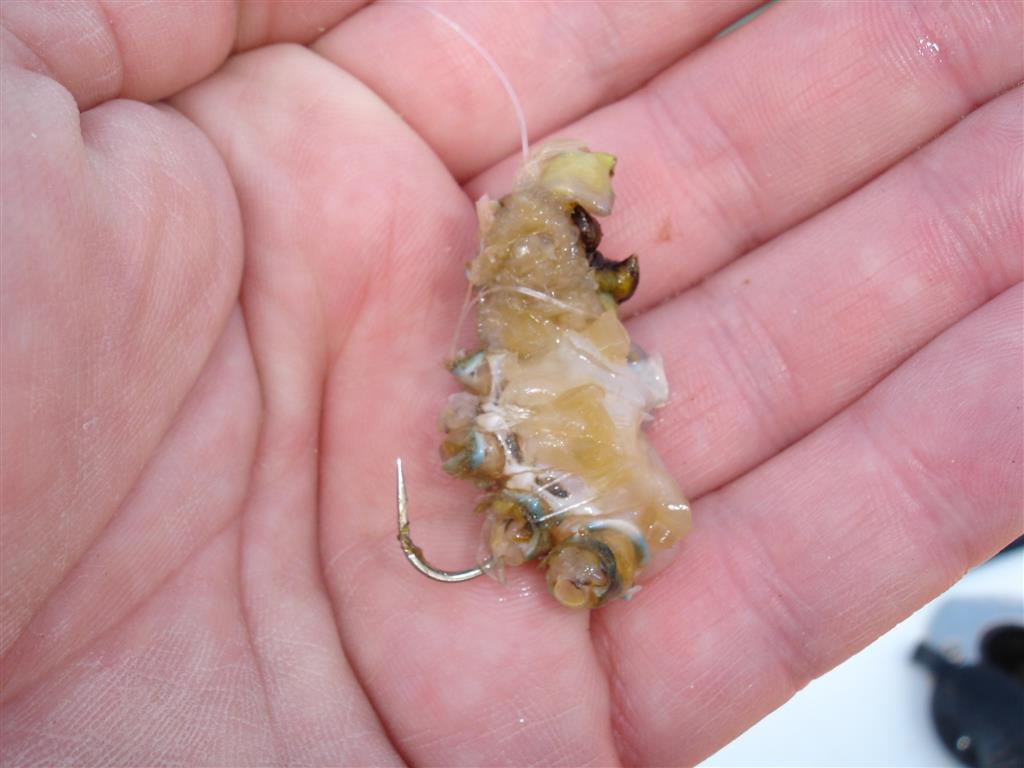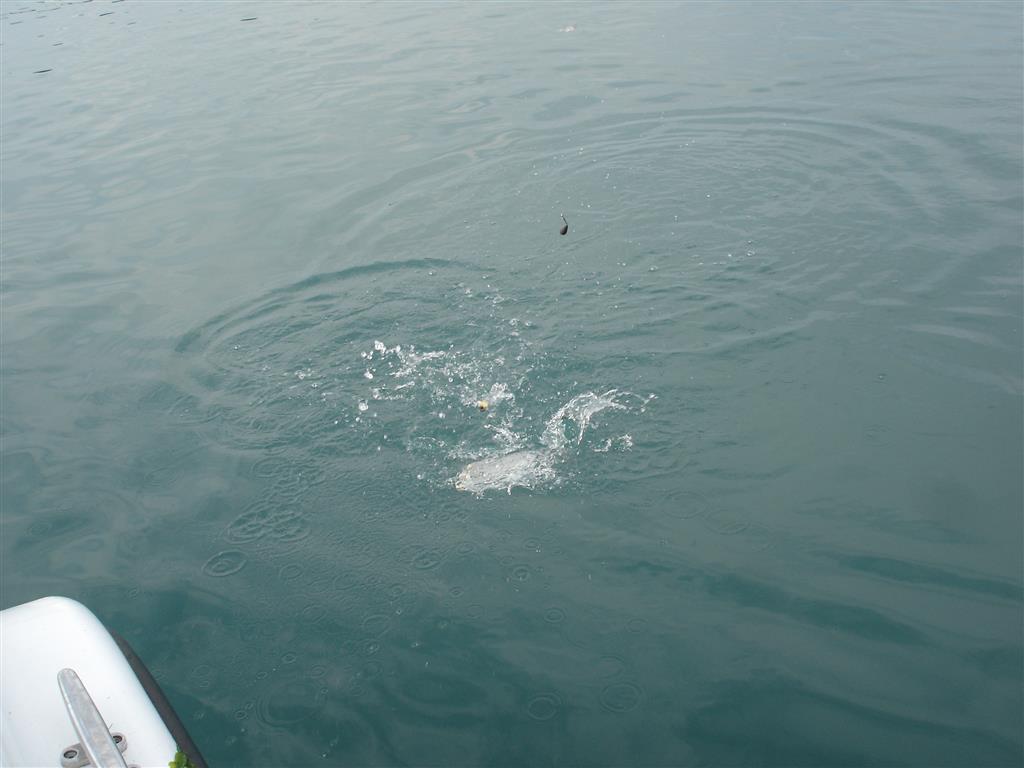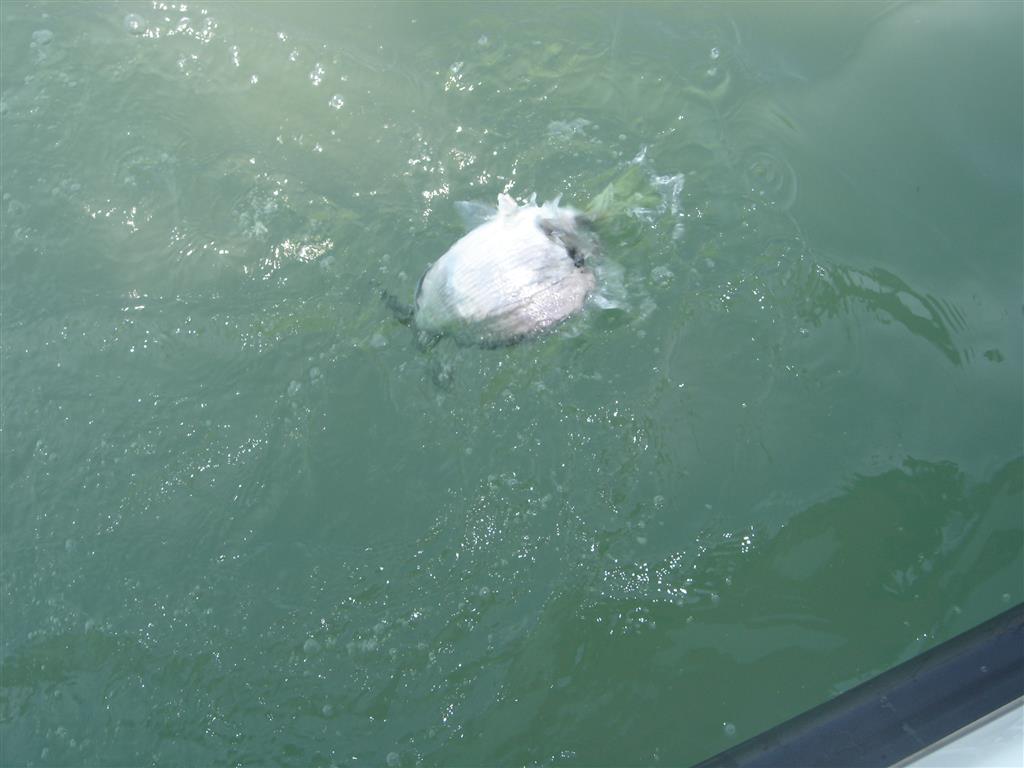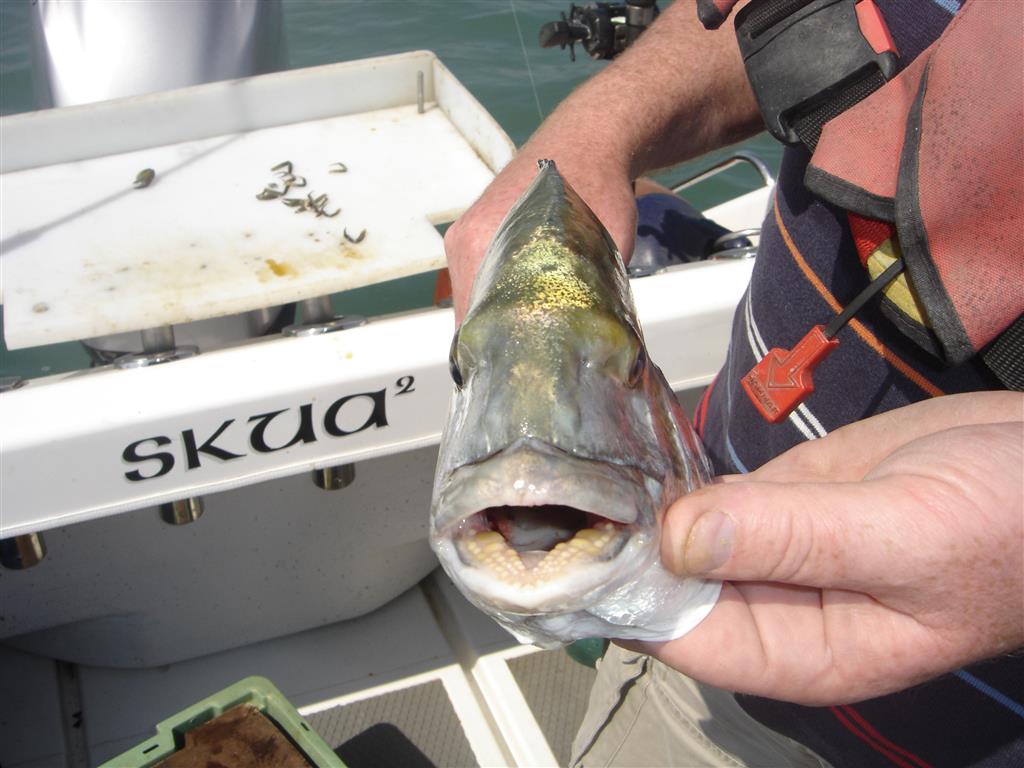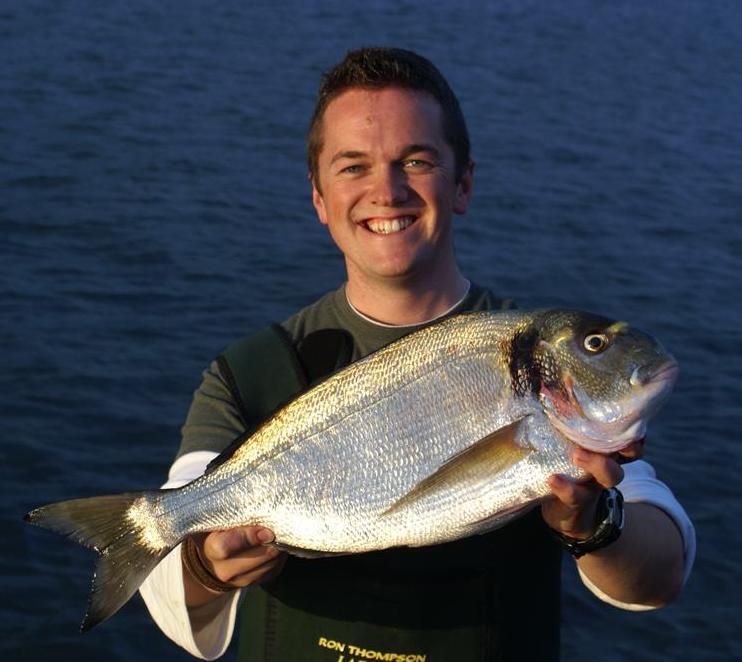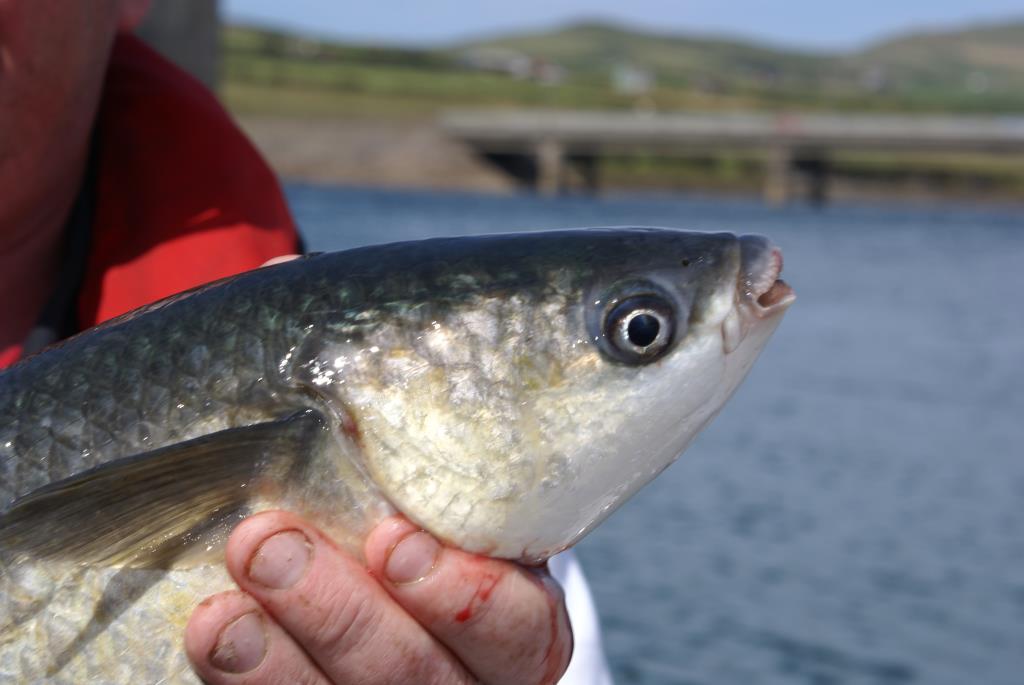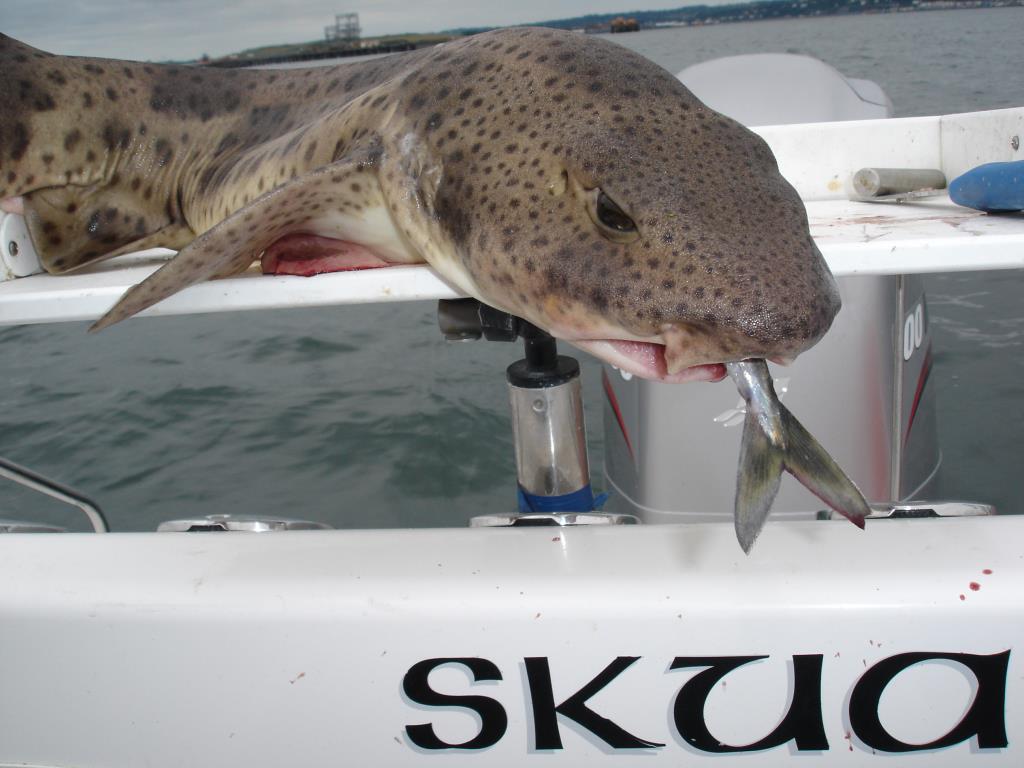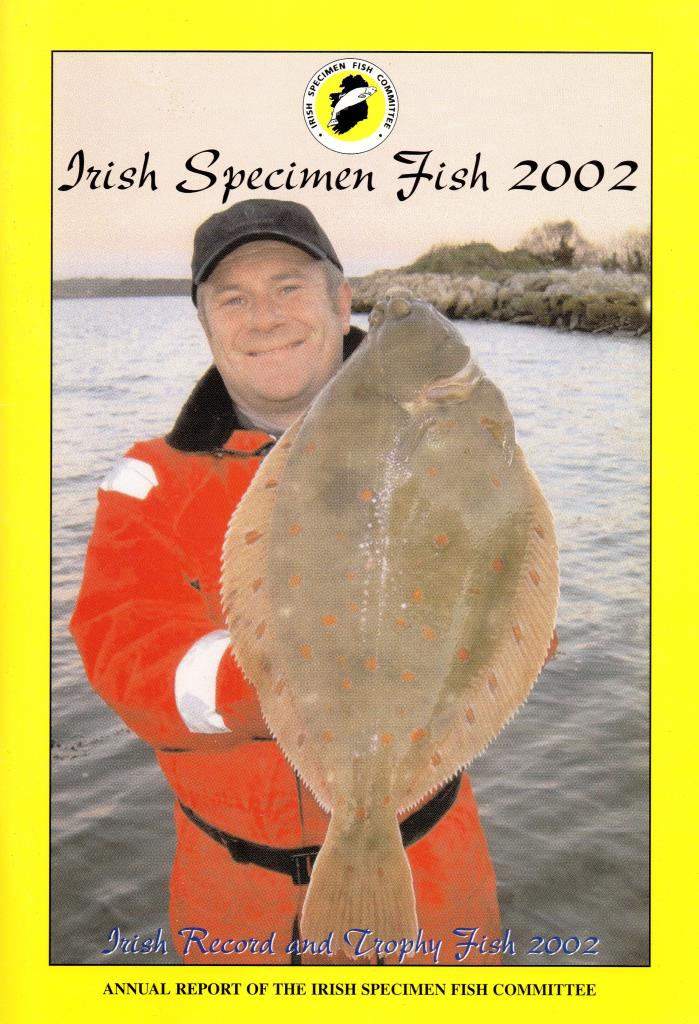* Boating Bream- Gilthead Bream
There’s something special about early morning fishing. It’s great to launch at dawn and cruise to a mark in the beautiful stillness that high pressure brings. Colours seem more vivid in the clear air. Recently, we launched Skua from Aghada on such a morning. The conditions on the day would have allowed us to travel wherever we wanted, but while planning the trip a few days previously there hadn’t been a mention of wrecks or anything offshore. We had one plan and one species on our minds: gilthead bream.
We’ve been studying bream for a long time. We’ve been addicted to these little powerhouses since we first caught them in 2003. They are a still a mysterious quarry. They seem to be a busy fish, never staying on one mark for long, moving with the tide between different areas. You get the impression that they are somewhat the bullyboys of the estuary, speeding into a location, eating what’s available before moving on to the next spot! Like many other species they depart for different waters in the winter months, arriving back again as the water warms up around May.
Where do they go in the winter? I have no doubt that they go to someplace warmer; it’s hard to blame them! Giltheads are at the edge of their range on the south coast, so it’s probably safe to say they head for deeper, warmer water before returning to their preferred haunt of shallow estuaries where there is an abundant source of food. They are voracious feeders. I have no doubt that if they remained all year in a particular area they would have it cleaned out in no time. Their capacity for feeding is matched by the sizes they can grow to; the Irish record is a modest 3.5lb, but the English record is over 9lb, while the French record is over 16lb! A bream of that size could pull you out of the boat and beat you up!
The gilthead is a recent addition to the Irish Specimen Fish Committee’s (IFSC) list. The current record was established last year and there were a few specimens caught during 2006, with the majority coming from Cork Harbour. There is an abundance of fish in Waterford but the bigger fish have been coming from West Cork and the Cork Harbour area. It will be interesting to see how big our bream will get. I’m sure that the record is going to be shaken a few times over the next few years.
The Trip
We set out from Aghada with the intention of catching some bream. The morning is exceptional as we leave the slipway and head for a quiet corner of Cork Harbour. We carefully manoeuvre Skua in the shallow water and we anchor as silently as we can. We tackle up and within minutes are casting baits away from the boat.
Because the water is so shallow, it’s important to get the baits away from the boat. In order to cast accurately, we find using a spinning rod with a small fixed spool reel to be the best tactic. It would be nice to use a specific rod for this type of fishing, but on a small boat space is at a premium so we use the same rods that we use for bass fishing. I use a Penn Millennium spinning rod. At 10ft it is manageable from the boat yet it is long and flexible enough to send a 2oz lead a fair distance. It also will handle plugs and spinners and so it has many uses, not just chasing bream.
During the winter we got our hands on a pair of Surecatch Altron reels. They are the perfect size for this style of fishing. The 940 is actually smaller-looking than your average Size 4 reel. It has a very smooth action and handles braid well. So far the reel has shown itself to be a capable performer that will not break the bank. Normally I would be happy to get two seasons from this style of fixed spool, but with eight bearings I hope it will last longer than that. The drag is very smooth and is a front drag system rather than the rear drag that I find can be awkward to adjust while fighting a fish. I am not known for giving my reels a great deal of maintenance. After a day’s fishing I’ll give my reels a spray down with fresh water, and I may spray a little WD40, but that’s about it. I hope the Altron will put up with my minimum maintenance programme!
So what have we flicked overboard? We’ve found that bream will take a range of baits. Crab is good but lugworm, ragworm and razorfish have all accounted for bream. As I said before, we get the impression that when bream enter a swim they will feed in a frenzy before moving on to the next location they favour. This level of competition usually means the fish bite hard and fast. We’ve found that a number of trace patterns will catch bream. Legers and paternosters will do the business, but a one-up-one-down made from clear Amnesia or fluorocarbon is worth a go as well. We like to use strong hooks. A good quality size 1 like a Kamasan B940u is perfect as is a Mustad 3261. Bream have a hard mouth with rough pads instead of teeth, so whatever hook you use make sure that it is sharp.
My first cast is with a two-hook paternoster baited with razor and crab. A two-ounce lead is enough to get the bait where I want it. When fishing for bream it is best to hold your rod. The bites are normally very quick and fairly ferocious. If you do not strike straight away there is a good chance that the fish will throw the hook. I put my rod into a holder for a few minutes while I peel some crab. I’m busily peeling when it doubles over. I grab it, but I’m not quick enough and miss the fish. At least we knew they’re around. When I have enough crab peeled for a few casts I’m able to assume my position at the stern of the boat, rod in hand and an expectant stare at the rod tip, willing it to take a dive.
It’s not long before my tip bends over crazily as a bream takes the bait with a power that would do justice to a fish twice the size. I strike swiftly and I know immediately I’m into a feisty bream. These fish fight hard and they fight dirty. The nature of the location is that the water is shallow, so the fish normally run away from the boat. But sometimes they’ll race headlong towards it, causing a spell of frantic reeling, before they turn and dash for open water.
It’s important that your drag is properly set as the lunges from a bream combined with an amount of head shaking can pull the hook from the fish’s mouth. This is where the flexible rod comes into its own. There is no give from the braid but the smooth drag and the flexible rod take all the lunges in their stride. I bring the bream to the side of the boat where we T-bar it off. As tough a fighter as the bream is they don’t take handling well. If you are going to bring the fish on board for photographing it is best to have a bucket of water handy, as they will not survive long out of the water. Therefore the best practice is to release the fish at the side of the boat without handling it at all.
Within minutes I flick out another trace, this time baited with lug and crab. Just as my bait hits the water, my crewmate strikes into a fish and another 2lb bream starts screaming around the boat. No sooner have I taken up the slack after the cast than my rod tip heels over again. My first inclination is I may have hooked a bass, the bite is so aggressive, but I soon realise that I have a good bream on. I play the fish and we get ready with the net. Just as he puts the net in the water the fish takes off again. This is heart-stopping stuff. Eventually we get the net under the fish and land a cracking bream. I dare not hope but the fish looks to be over the magic 3lb specimen weight. When we confirm that the fish is indeed a specimen I do an unorthodox Russian polka around the back of the boat. This is a big fish for me, and my tenth specimen species.
It is at times like these that I wonder about the IFSC’s ruling that all fish must be weighed on land. I understand the integrity of their system and am happy that this fish will be eaten and appreciated, but it still tweaks my conscience. Still, at this stage of the session we have released plenty of bream to fight another day. If some of the commercial fishermen or poachers knew these fish were here they would be netted relentlessly until they were gone, so one fish for the pan may not make that much of a difference in the overall scheme of things.
The bites are coming fast, but it looks as if the fish are about to move on again. I see the other rod bend over and soon he is battling with a very good fish. The run was as fast as any bream we have seen. There’s such a bend in his rod that I begin to wonder if he’s picked up some weed. I can see from his face that this is a big fish. He is more tentative than ever as he loosens his drag a little more. The fish speeds around from the port to the starboard side of the boat. I ready the net, but as soon as I dip it into the water, the fish makes a final run.
The next time it’s close to the boat I’m able to slide the net underneath and lift it on board. By heck this is a big bream. It’s surely a specimen but could it break the current record? The fish weighs in at just over 2kg, or 4.5lb in old money, shattering the current record by nearly a pound. We are speechless. It’s hard to concentrate on the fishing but it doesn’t matter anymore at this stage as the bream have moved on.
We head back to the slipway in Aghada. We weigh and verify our fish as per ISFC regulations. The fish has indeed shattered the current Irish record, but whether the fish will become the Irish record remains to be seen. There’s a long summer ahead and good-sized bream are being caught all along the south coast. We will have to wait and see. As a new species, the bream record is bound to be broken until the fish begins to attain its maximum weight in our waters. Hopefully these fish will grow as big as their French cousins. If a 4lb bream fights like hell what would a 16lb fish do?
Irish Angler 2007
[box type=”note”]2014 Update:
Well that bream never did make the Irish Record. Cork Small Boats team member Rob McLean landed a huge bream that held the record until 2013. The bream in Cork Harbour represented the best chance an angler had at that time of landing a specimen fish. Realistically this spelt the end for the fish that were in the area. The fish got bigger but the numbers got smaller.
Nowadays anglers do not even attempt to target the fish. The environment was changed as well ant this did not suit the fish. Giltheads are regularly targeted and caught in the estuaries of Waterford and Wexford and a few location in West Cork.
If I was targeting them in the same area of Cork Harbour I would now be taking them on soft lures. The rods, lures and techniques would surely lend to capturing these super fish on lures. [/box]





